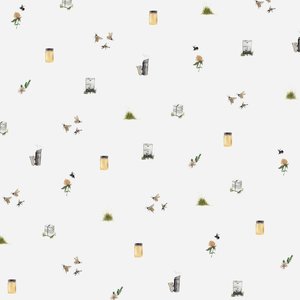WELCOME TO POLLINATOR WEEK
Welcome to Pollinator Week 2018. At Apiary Made we absolutely love joining in this celebration of our pollinators. Here’s why: Pollination is the act of transferring male plant sex cells (pollen) to the female reproductive parts of flowers in the same species. Pollination leads to fertilisation and this is vital for the life cycle of all flowering plants, and necessary in seed and fruit production.The purpose of Pollinator Week is to bring attention to their fundamental role in the world, and the unnerving truth that the world is suffering from major pollinator decline.

Pollinator Week is celebrated in Australia during our Spring and works to engage communities and the public to support our pollinators.
Bees are very efficient pollinators and so are significant members of this group. Therefore, this week is a wonderful time get to know more about bees. Specifically species of Australian native bees, which are sometimes overlooked as they differ from the European honeybees.
Here are some beautiful and unique differences regarding Australian native bees:
- Australia is home to approx. 1,600 native bee species.
- Most of these native bees are solitary bees, meaning they complete their life cycle alone, comparatively to honeybees which are social bees. Solitary native bees don’t produce honey or live in large hives like honeybees, though a few do store pollen and honey in order to survive winter.
- Australian native bees can pollinate many fruits and vegetables. In fact, of the 352, 000 flowering plants and crops, 90% require pollination from pollinators.
- Resin bee, reed bee, masked bee, leaf cutter bee and blue banded bee are a few names you can google to get familiar with them!
By understanding more about their threats, we can help conserve native bee populations, simultaneously supporting the eco system and food security.
Threats include:
Urbanisation removing the bees natural habitat.
Urbanisation increasing flowerless landscapes.
Pesticides contaminating bees food.
What can you do to help?
A couple of simple things to help them out can be done at home… this includes planting for bees in your garden and creating a bee hotel. See our previous blog post to learn more about planting.
Creating a bee hotel can be a little work but is such a fun and rewarding activity. See beebusiness.com.au for more resources.
The most simple way is outlined below:
To create a nest that may attract natives such as reed bees and masked bees, you can create a bundle of hollow or pithy stems.
- Harvest long canes of bamboo, lantana, or other hollow or pithy stemmed weeds (you may need the help of a local bushcare group).
- Simply cut them about 200mm long and wire them together, hanging them in a tree or on a fence.
Ensure the spot you place the bundle isn’t too hot and there is water around.
If you’re interested in this kind of thing for your garden, you can also visit websites such as honeyflow.com.au who create beautiful pollinator houses.
Have a wonderful week- we hope you spot some new, native friends and join us in this celebration.




